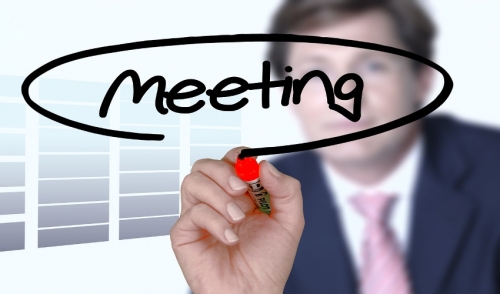On estimate, companies waste $37 billion per year on ineffective & meetings that don’t have any outcome – and that’s in the United States only. You can multiply that number several times to figure out how much all businesses spend on useless meeting sessions.
With inefficient meetings your productivity suffers during workdays, meeting attendants end up wasting their important time that could o be spent on performing more productive and important activities. Half of the time spent on meetings leads to no positive outcome.
This article includes a discussion on how you can avoid conducting meaningless meeting sessions.
Why companies waste a huge amount of money on just meeting sessions.
There are several different reasons why businesses aren’t making much of the effort to cut on these unnecessary meeting sessions. Because these expenses don’t appear as losses and are often related to indirect costs, they’re hard to identify.
Secondly, our business culture plays an important role. If the manager sets up a weekly team session, employees might not feel good at challenging his call.
We live in a day and age where we’ve to be available at work all the time. It’s easy to use your employee’s productive time by setting up a team session.
Let’s talk about poorly organized team meetings. Bt poorly organized we meant sessions that don’t have any solid result or outcome and where no one follows up on these sessions and attendants have nothing too productive to show.
Fortunately, there are several ways to improve meetings and cut down on the costs.
How much are you wasting on your meetings?
An hour-long meeting session can cost you a lot of time.
According to a Clarizen/Harris Poll survey, employees spend 4.6 hours preparing for meetings and 4.5 hours attending meetings every week on average. It means every employee spend a total of 9.1 hours of their time on meetings weekly
What step you can take to cut down on unnecessary meetings?
It’s time to give it a thought on what you can do about meetings that are useless and not required. Try to create a process for your meeting sessions. Keep guidelines that streamline how your meetings are held in place.
Following are those guidelines to assist in cutting down unnecessary meetings.
Define meetings internally
People might see meeting sessions as the primary tool to communicate with other colleagues. They aim to schedule meetings more frequently, meanwhile, others might not get why team sessions are held.
It is very significant that you clearly define what meetings mean to your organization.
Decrease the quantity of meeting session you conduct
Your aim should always to conduct the less no. of meetings sessions
But as we discussed above and by agreeing with your colleagues that the more you held fewer meetings, the better, you’ll get there in terms of productivity and efficiency
Make meetings as effective as possible
We’ve discussed a productive meeting session previously. You can peruse more about the stuff to oversee gatherings in the correct manner here and here.
To sum up, compelling meeting sessions share a couple of things for all intents and purposes.
They have a reason - Every gathering ought to have a target they expect to accomplish it, there ought to be a motivation behind why the gathering is being put. On the off chance that the goal is muddled and purposeless, (for example, “share data” or “discussion about the undertaking”), there’s ought to be no gathering. Be as clear as you can while forming your gathering objective
They have a plan - Productive group meetings have perfectly clear plans that send the message that what will be examined at the meeting. That plan is then applied at the gathering. Thus, if a gathering specialist features an issue that is not associated with the plan, you can generally arrange a different meeting for those issues.
They are short - Wasting time at viable gathering meetings is a major no. The meeting administrator esteems and regards different associates’ time and keeps gatherings as short as could be expected. The favored gathering length is 15-30 minutes.
There aren’t many gathering members. it’s exceptionally huge critical to set assumptions and allocate parts to meeting orderlies before the meeting starts. By relegating them work, they will enter arranged in the meeting room which will bring about saving you a ton of time during the meeting.
They incorporate things to do. Meetings need significant results. When meeting orderlies leave the room, they realize what is normal for them.
Meeting records are not difficult to track down. All meeting results should be recorded properly on the grounds that they fill a need, so it is extremely important to store them in the right way. Likewise, make them simple to access by making meeting records and labels and furthermore making them accessible carefully on the basic worker so individuals who need can experience
Arrangement a subsequent cycle. Viable gatherings bring about a strong result. Attempt to execute a demonstrated subsequent cycle that makes it straightforward for everybody to follow up.
Note down your Guidelines
The best way to make sure that session best practices are implemented is to note down your meeting session
Try to make your guidelines as specific and simple to use as possible.
- What types of meetings sessions are conducted at your company?
- What is the duration of your meeting session?
- When it is allowed for the team to conduct longer sessions?
- What does your agenda look like?
- Decide who attends meetings and who doesn’t?
- What’s your follow-up process? Who’s in charge of it?
- How is meeting material stored? How is it archived?
Conclusion
If we look at some of the surveys conducted, companies waste $37 million on unproductive meetings, which means they don’t achieve anything.
Try to set up your guidelines and achieve the maximum outcomes from them. It results in better meetings and saves money and time.
Do let us know what particular steps and practices you implement in your company to acheive solid results.
More Posts
Why Storytelling is important in Meetings
 Would it be that causes you to recollect a few things individuals state in a way that is better than others? It's not really the speaker's novel characteristics or skill. Also, it's...
How to determine the importance of a meeting
 Meetings are handily utilized as an answer to most business issues. Conducting a meeting session to talk about a difficulty feels like you're gaining ground. And yet, sessions are not an answer...
The Complete Guide to Productivity Methods
 Profitability is tied in with completing your most significant assignment. To get more gainful, you should maintain your attention on the assignment that carries you nearer to your objectives. In any case,...
Why Effective Teamwork is Important
You realize powerful cooperation is vital. All things considered, a viable group implies your association performs better. A collaboration environment advances a positive environment that encourages companionship and steadfastness among colleagues. These connections...


